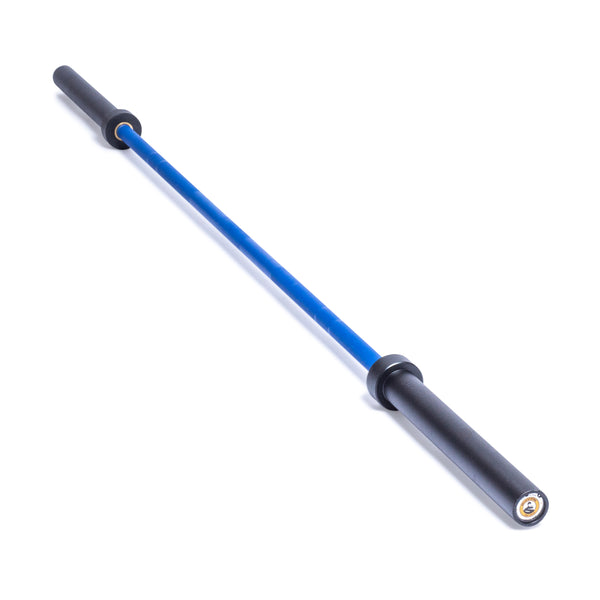Are you tired of only using your body weight, resistance bands or machines for your workouts?
Do you yearn to join the hallowed ranks of Hercules and Atlas, commanding respect and awe as you lift strength implement like the almighty barbell?
Well, my fellow home gym enthusiasts, you’re in luck because, in this comprehensive guide, we’ll explain exactly what an Olympic barbell is, so you can use it to unleash your inner lifting god. An Olympic barbell is a type of weightlifting bar used in Olympic weightlifting and powerlifting competitions, though it’s also used in recreational training.
It is a long and sturdy piece of steel designed to hold a significant amount of weight. Olympic barbells are fairly standardized in terms of their dimensions and weight, ensuring consistency across competitions.
Here are the finer details of Olympic barbells. An Olympic barbell is typically 7 feet long (2.2 meters), although shorter variations exist for specific purposes, such as women's weightlifting. The standard weight of an Olympic barbell is 20 kilograms (44 pounds) for men's competitions, while women's bars typically weigh 15 kilograms (33 pounds).
However, they’re often rounded up to 45 pounds and 35 pounds for men & women’s bars, respectively — but there are even lighter training bars available as well.Olympic barbells have a standardized diameter of 28 millimeters for men's bars and 25 millimeters for women's bars.
The diameter may vary slightly depending on the manufacturer and the specific purpose of the bar. The sleeves of an Olympic barbell are the ends where weight plates are loaded. These sleeves are designed to rotate independently of the bar to minimize the stress on the lifter's wrists and allow for smooth movements during lifts.
The loadable length refers to the area on the sleeves where weight plates can be added. It is usually around 16 inches (40 centimeters) on each side, allowing for a considerable amount of weight to be added. The barbell's knurling refers to the textured pattern on the grip area. The pattern provides a better grip for the lifter, promoting safety and control during lifts.
Olympic barbells typically have knurling in the center of the bar, known as the "rough" or "athlete" grip section, while the areas near the sleeves have a smoother finish.Olympic barbells often have markings known as "rings" or “hash marks” on the shaft of the bar.
These rings are spaced according to international standards, giving direction on where your hands should be placed during various lifts, such as the snatch and clean and jerk.Olympic bars are meticulously crafted from high-quality alloy steel, ensuring both formidable strength and sometimes an appealing whip.
Meanwhile, the sleeves are usually plated with a chrome coating to resist corrosion and provide a touch of elegance to your lifting implement. A barbell's weight capacity is the ultimate testament to its quality. Many can support between 400-700 pounds, while the strongest barbells can withstand 1,000 to 1,500 pounds!
The Olympic barbell sleeves are 2-inch (50.8 millimeters) in diameter, which means that Standard (1”) weight plates will not fit. Only Olympic weight plates are compatible with Olympic barbells. Olympic barbells are more than just hunks of metal — they're your trusty sidekick on the weightlifting journey.
For that reason, knowing what to look for is essential in making the right choice when selecting an Olympic barbell for your home gym.



